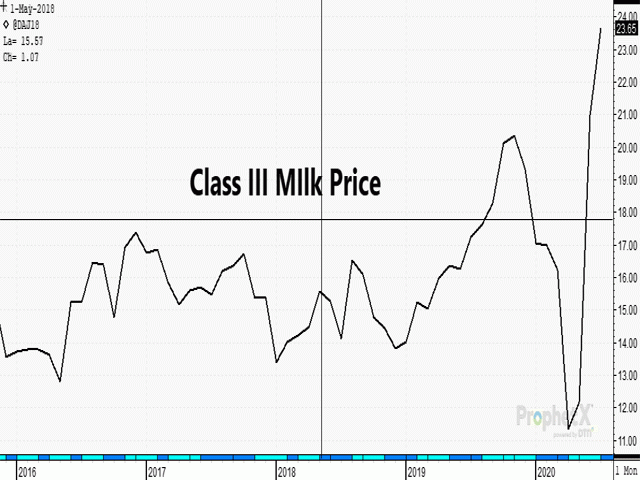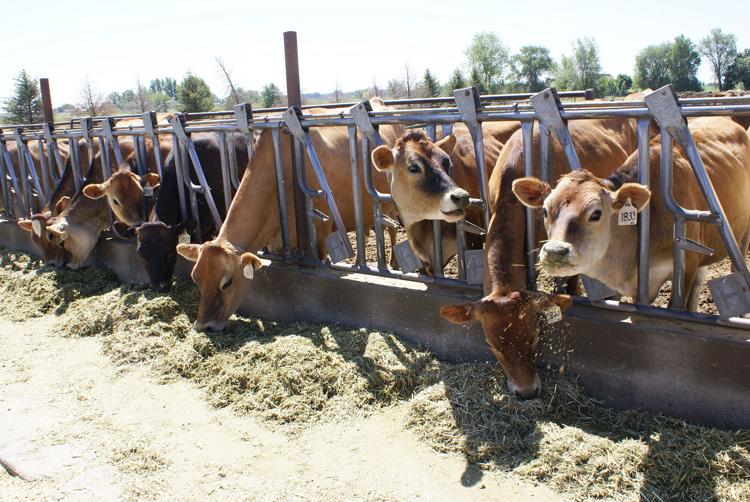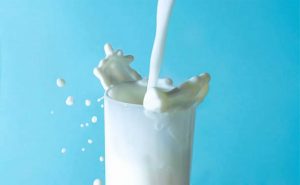Changes in the livestock markets were much reported through March and April, including backed up production and processing. However, the dairy industry has an even more limited shelf life, eliminating the ability to back up production and processing.

For dairy producers, the inability to sell milk to processors meant one of two things: either “dry up” cows, thereby prematurely ending the production cycle and waiting until the next cycle before that animal will produce milk again; or keep milking these cows and dump the milk. We saw many reports of millions of gallons of milk dumped on fields and plowed into the soil as fertilizer. This pandemic came at the worst time of year in the dairy production cycle. The spring “flush” is considered peak production time and limiting milk output near this peak will significantly affect overall milk production through the rest of the year.
The significant shift in market prices is being driven by differing factors, which makes this move even more volatile and could continue to leave markets plagued with rapid shifts through most of the year. Tighter milk supplies and growing demand for dairy products through the end of last year left prices moving higher into the holiday season of 2019. However, the abrupt change in buyer demand habits during March and April 2020 — due to the coronavirus shutting down the economy — sparked significant disruptions in the way milk and dairy products were processed. For example, the majority of fluid milk demand has traditionally been from the food service industry. This includes school lunch programs, colleges, cafeterias, restaurants and catering venues. A large segment of the processing industry is setup to process and package milk in either small single serving containers (school lunches) or large commercial dispensers. The abrupt and immediate change in the food service industry in March left these production lines dark, with the infrastructure not able to effectively transition to producing milk for retail suppliers (think gallon bottles).
Once the shock to the system set in — and markets tumbled to $11.23 per cwt during the month of April — renewed demand for retail dairy products, such as cheese, butter and other processed dairy products surged as consumers flooded grocery stores and cleared shelves of many products. As a result, barrel cheese prices surged from an April low of $1 per pound to current levels of $2.37 per pound. These cheese price levels are the highest seen since 2014 and near historic levels.
Class III milk futures are currently trading at $23.40 per cwt, which is a 208% rally from April lows, with the expectation that increased demand support through the summer months will continue to drive strong buying in most dairy products, including fluid milk, ice cream, cheese and butter products. Even though the food service industry is still struggling to regain market share due to social distancing and limited consumer demand, schools planning to reopen and return to a semi-normal routine through the fall and winter is expected to keep demand for dairy products strong through the end of the year.
Given current milk and cheese price levels, it is likely the majority of gains have already been priced into the complex, but the effect of the coronavirus on the dairy industry is likely to disrupt the normal milk production cycle for months, if not years.













